Sustainable living: How to help combat climate change at home
Reports on climate change can leave us feeling helpless, but there are plenty of sustainable living ideas we can try to lessen our impact on the planet and save energy...
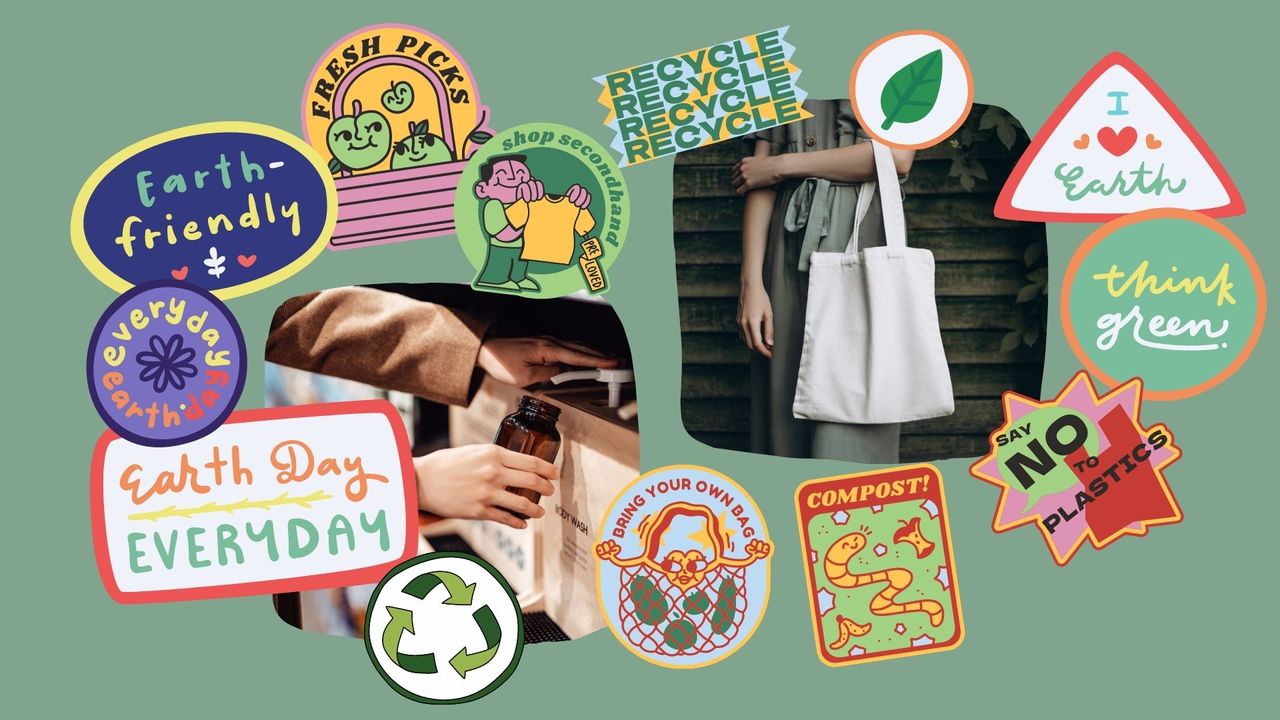
Sustainable living doesn't mean changing your whole life for the cause of climate change. In fact, you might be surprised at how quick and easy some of these small changes are that will make your day-to-day life that little bit more eco-friendly.
Recent research from the UN's World Meteorological Organization found that 2021 was one of the warmest years on record, and, according to NASA: "the planet's average surface temperature has risen about 2.12 degrees Fahrenheit (1.18 degrees Celsius) since the late 19th century, with the seven most recent years being the warmest."
So, there's never been a better or more important time to get informed about how to live more sustainably and do your bit to save the world. From being a little more conscious with our energy usage, to shopping with sustainable clothing brands, sustainable living is easier than you think. It's time to take action.
What does sustainable living mean?
Quite simply, sustainable living is an understanding of how our lifestyle choices make an impact on the world—both positively and negatively.
Those who want to live a more sustainable life will find ways to attempt to reduce their use of natural resources (for example oil, coal, and gas) as well as reducing their use of consumer products that may harm the environment and have a negative impact on the world by contributing to waste and carbon dioxide emissions.
Environmental Scientist Duncan Williamson says plainly: "We are in the midst of both a climate and biodiversity crisis, and globally we are heading towards a water crisis. Anything we do to use less and make more eco-friendly decisions helps tackle these multiple crises. The longer we delay, the higher the cost to each of us and the worse the impacts."
"In a nutshell by buying less, reusing and recycling more, we are helping the planet and saving money. Our children and grandchildren are going to experience the impacts of these crises and anything we do now helps their future."
Sign up for the woman&home newsletter
Sign up to our free daily email for the latest royal and entertainment news, interesting opinion, expert advice on styling and beauty trends, and no-nonsense guides to the health and wellness questions you want answered.
Sustainable living ideas
Sustainability is something that can be woven into many different elements of our lives. Whether that's buying eco-friendly beauty products, shopping locally and supporting independent businesses, walking more and using the car less or even trying out Veganism or a vegetarian diet a couple of times a week to reduce your weekly consumption of meat.
Here are some of the best ways to live a more sustainable lifestyle in 2022...
1. Recycle
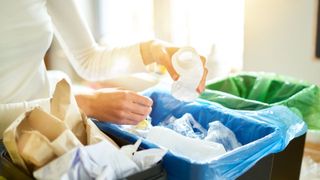
Recycling your trash is a very simple sustainable living step you can take to be more eco-friendly, with 1.1lbs of municipal solid waste recycled per capita in the United States every day. The most recycled material in the U.S. is paper and cardboard at a rate of 65.7%, but only 8.7% of plastic is recycled, highlighting the importance of cutting down on our plastic usage.
Many materials can be recycled in dedicated waste containers at home (just check the packaging on your products if you're unsure) and businesses often have recycling drop-off points for larger items.
TerraCycle, a global leader in recycling hard-to-recycle materials, recommend putting recycling bins in other rooms in your home, not just your kitchen, as a simple way to increase the amount you recycle every week. "The bathroom is a prime example of where the addition of a recycling bin can dramatically reduce the amount of waste you send to landfill," the brand points out.
2. Cut down on plastic
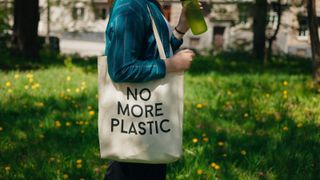
Global plastic production averages more than 300 million metric tons per year, with only 21.3% recycled worldwide. The improper disposal of plastic waste is a serious issue, with 5.25 trillion macro and micro pieces of plastic in our oceans, and an additional 8 million pieces entering waters every single day.
Simple ways to cut down on your single-use plastics usage in everyday life include drinking through reusable straws, using tote bags to replace plastic shopping bags, investing in a reusable water bottle and coffee travel mug and using zero-waste stores to top up on dry ingredients like rice or pasta for your pantry, rather than buying products wrapped in plastic packaging at the supermarket every week.
3. Switch up your beauty bag

Revamp your beauty bag and switch out your old items for eco-friendly products that will make you look and feel good while doing your bit to help the planet. For example, consider swapping your plastic toothbrush for a bamboo one. Prefer an electric toothbrush? Bambooi's BioMaxis made from 100% renewable and recyclable materials.
Other ways you can improve the sustainability of your beauty bag include cutting down on things like make-up remover pads. Products like Garnier's Micellar Reusable Eco Pads add a luxurious touch to your skincare routine without adding extra waste to the planet.
It's also advisable to cut face wipes out of your skincare routine altogether. Not only are they bad for your skin, they're really bad for the planet as the majority cannot be recycled, so used face wipes end up in landfill.
See our specialised guide for more sustainable beauty tips.
4. Save water
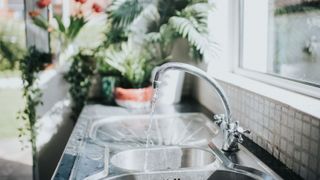
Cut down on your water usage by taking shorter showers and turning the tap off while shaving or brushing your teeth. It may not sound like it will make a big difference, but turning off the tap while you’re brushing your teeth can save six litres of water per minute. Is your tap dripping? It could be wasting 15 litres of water a day, or 5,500 litres of water a year.
In the kitchen, skipping the nightly dishwasher cycle and only washing full loads will make a world of difference.
By using less water, less money needs to be spent on energy, chemicals and additional reservoirs to treat and pump it.
5. Try to avoid products containing palm oil

Palm oil is the world’s most widely traded vegetable oil, found in everything from moisturisers to toothpaste. Millions of hectares of forest in Southeast Asia have been cut down and replaced with palm oil plantations, devastating species such as orangutans, tigers, rhinos and elephants, and releasing millions of tonnes of climate change-causing greenhouse gas emissions.
It’s also linked to the burning of peat soils, which has caused a dense 'haze' over parts of Southeast Asia, threatening people’s health. So, what can you do? Check labels, ask questions and look for RSPO (Roundtable on Sustainable Palm Oil) certified palm oil, whose producers must adhere to strict guidelines.
6. Try to walk more and use the car less

If you're looking to get your steps in, you're taking a step towards helping the planet. Not only are there many health benefits to walking both physically and mentally, but it also helps the environment.
According to the United States Environmental Protection Agency, "a typical passenger vehicle emits about 4.6 metric tons of carbon dioxide per year," with "every gallon of gasoline burned creating about 8,887 grams of CO2".
Of course, it's not always possible to get to your destination on foot. You could consider cycling, using public transport or, if you know people heading to the same event as you, why not consider car sharing?
7. Give meat-free Mondays a go

The Food and Agriculture Organization of the United Nations (FAO) estimates that livestock production is responsible for 14.5% of global greenhouse gas emissions, while other organisations have estimated it could be as much as 51%.
Mitchell, associate director of sustainable nutrition at Forum for the Future, a nonprofit organisation addressing sustainability challenge told us: “If the whole world ate the way we do in the UK, by 2050, we’d need more than five planets to meet food demands.”
The 'Meat Free Mondays' initiative was started based on the belief that cutting meat out of your diet for just one day a week could make "the world of difference" in helping to cut down on some of those greenhouse gas emissions associated with the meat industry around the world.
Although the initiative uses Monday as its day of the week, you can of course pick any day and any number of days to try and eat less meat.
8. Try a 'Climatarian diet'

More than a third of people in the UK now identify as flexitarian – or part-time vegetarian - mixing meat-free days and vegetarian recipes with meals that do incorporate animal products.
If cutting meat out entirely isn't an option for you, you could consider trying a 'Climatarian diet'. This data-backed diet involves swapping meats like beef and lamb for more sustainable options like pork and poultry, as well as substituting food that needs to be flown from overseas for seasonal fruit and veg - ideally grown locally.
“Eating a Climatarian can improve health and save our planet,” says Dr Alona Pulde, who works with nutrition app Lifesum. “And the good news for meat and dairy-lovers is that it doesn’t mean cutting these foods out completely. It’s about considering the origins of what you eat and reducing your CO2 impact by choosing eco-friendly options such as locally sourced, seasonal ingredients.”
Research has shown that widespread adoption of vegetarian or vegan diets could lower carbon emissions by 63% and 70% respectively. Beef production requires 160 times more land and produces 11 times more greenhouse gases than potatoes, wheat and rice.
9. Freeze your 5-a-day
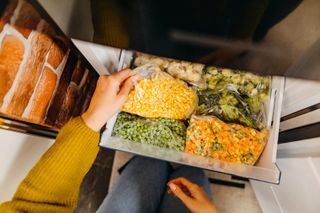
When food waste goes to landfill it rots and produces methane, a greenhouse gas with a 100-year global warming potential of up to 34 times that of carbon dioxide.
Cutting the amount of food you throw out is one of the best things you can do to cut emissions, and falling in love with your freezer is a simple way to do it. Track use-by dates and if it looks like your fruit or veg isn’t going to make it to the plate in time, freeze it!
"Waste less food, it is an easy win," says Williamson, who is currently working in partnership with Merchant Gourmet. "Most people still throw away around a third of the food they buy. If you buy less and throw less food away, you are ultimately saving money. Food is one of our biggest personal impacts on the planet, especially meat, and buying, using and wasting less makes sense."
"Eating frozen vegetables is another low cost, planet friendly idea. Frozen vegetables are a fantastic, low cost, no waste and highly nutritious option, with little or no preparation needed."
10. Go paper-free

With so much of day-to-day life now digitized, cutting back on the amount of paper in our homes is easier than ever. For example, switch from paper bank and utility statements to online billing and, when travelling, opt for e-tickets rather than printed versions.
To endless reams of wasteful paper leaflets from being shoved through your door, put a “no junk mail” sign on your door and opt out from unaddressed promotional material by downloading a form from royalmail.com.
11. Update your white goods

A fridge and freezer account for about 7% of the average household energy bill, with those built in the 2000s using up to five times more electricity than newer models. So, if your white goods are over 12 years old, it might be time to consider upgrading to a newer, more eco-friendly model.
If you’re looking for a replacement, choose one with an A+ or A++ rating. Find out how to recycle old appliances at recyclenow.com
What else can I do to help combat climate change at home?
"The choices we make every day are important to our own investment in sustainable lifestyles," says Douglas Morton, founder of eco-friendly shopping service, Bother.
"Lots of businesses are becoming B-Corp certified, which means they have to commit to looking after the planet, including having carbon neutral pledges. Look for the small changes you could make in your life, in the way you shop, wash, and eat, that cut out the excess in all aspects, for a more sustainable way of living.
"For example, can you make your bathroom more eco-friendly? Maybe you can swap your plastic toothbrush for a biodegradable one and tube-free dental tabs. Could you swap in a vegan or less chemically polluting washing-up liquid? Do your research about where you spend your money."
In addition to changing what products you might buy, consider how much you are purchasing too. In the great stockpile chaos of the early pandemic in March 2020, many people were purchasing far more than they needed. Not only did this stop others from getting what they need, but it would have also impacted the environment in a negative way.
"Knowing your consumption and what you actually need for your home, is essential to not being wasteful, both literally and in your shopping trips. Ensure dry cupboard essentials are bought against the rate you use them and when they need replenishing; this will free up your capacity to shop locally and seasonally to minimize your food miles," explains Douglas.
"90% of all carbon emissions are not derived from manufacturing processes, but from distribution and usage of products- such as energy-guzzling refrigerated vans to keep food cold. Sourcing your heavy-duty cupboard essentials such as washing up liquid and pasta (that don’t need chilling) in efficient and accurate instalments, allows you to focus on how you can sustainably shop for fresh produce."
Lauren is the former Deputy Digital Editor at woman&home and became a journalist mainly because she enjoys being nosy. With a background in features journalism, Lauren worked on the woman&home brand for four years before going freelance. Before woman&home Lauren worked across a variety of women's lifestyle titles, including GoodTo, Woman's Own, and Woman magazine.
-
 7 key interior design trends for spring 2025 to give your decor a seasonal refresh
7 key interior design trends for spring 2025 to give your decor a seasonal refreshFrom elegant neutrals to uplifting brights, welcome the new season with our round-up of the key trends for your home
By Tamara Kelly Published
-
 Exclusive: Susanna Reid on partying with her kids and an alcohol-free social life - 'I go clubbing in Ibiza'
Exclusive: Susanna Reid on partying with her kids and an alcohol-free social life - 'I go clubbing in Ibiza'Susanna Reid tells woman&home about her dance-filled holiday to Ibiza last summer, revealing that she's grateful for family time and the privilege of getting older.
By Caitlin Elliott Published


